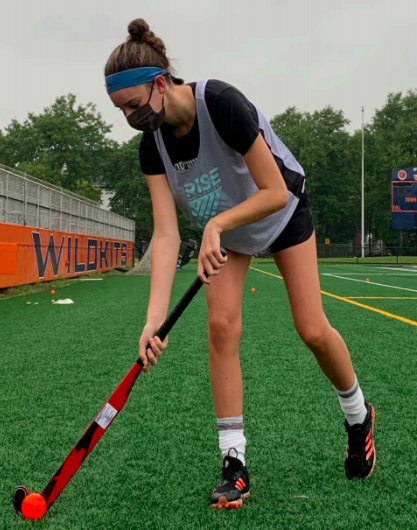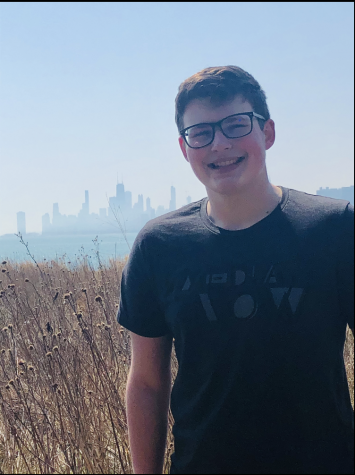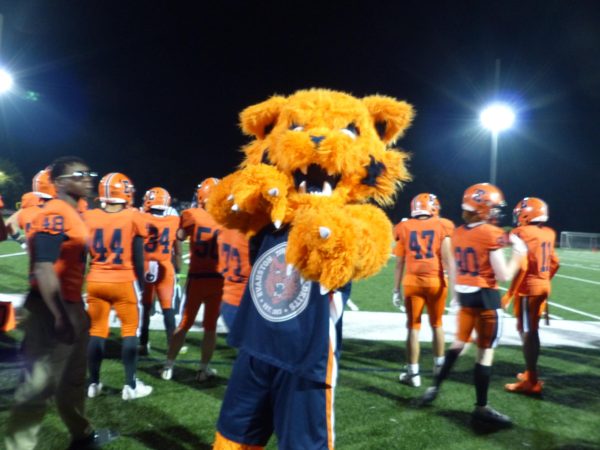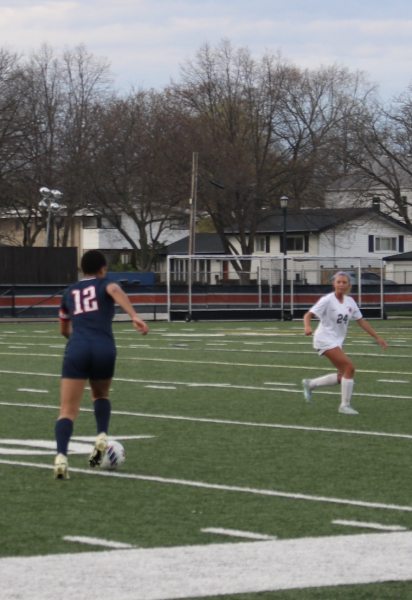Sports—at ETHS and beyond—amidst a pandemic

Photo by Madison McGuire
September 27, 2020
If you crossed Church and Dodge anytime throughout this summer, there’s likely one thing that drew an eye: Lazier Field.
While some may think that attendance would be limited due to a global pandemic, that couldn’t be farther from the truth for summer programs at ETHS. With over 2,000 registrations throughout the summer, Evanston’s athletic department. kept things creative and busy.
Following months on lockdown, Illinois, as well as the Illinois High School Association (IHSA) permitted schools to resume in-person, socially-distant athletic activity, something that ETHS immediately took advantage of.
At the start of June, Wildkits were limited to ‘strength and conditioning only days,’ as a part of Illinois’ plan to return to play. Following several weeks of non-sport activity, the IHSA granted schools the ability to resume sport-specific training in late June.
“It was a lot of work. It’s the hardest I’ve worked ever. To make sure that we had one, the right training for coaches to know what they could and couldn’t do… Whether it was the sanitation bottles or assigning the screeners to be at all of the different locations at the right time, with the right thermometers, the rosters and all that. That was a big juggling act,” Athletic Director Chris Livatino said. “When all said and done, to our knowledge, there wasn’t one transmitted case through camp at all. It was great.”
Despite being a challenge, it was one well worth it for Livatino. For many students, these programs were the first form of in-person socialization since March 13, when ETHS began learning remotely.
“Obviously, I hope that that was a really big part of every kid’s summer, especially if they were closed off from the rest of the world during the months of March, April and May,” Livatino explained. “To finally get a chance to reconnect with their friends, their teammates, their coaches, to get outside and just let loose for a little bit. I hope it let them have some of the fun and excitement of the summer that they remember from other years. I hope it brought them some peace of mind and some happiness. And that’s really what we are hoping that we can bring everybody this year with the new seasons as they are. It’s just a chance to have some fun with your friends playing sports that you love.”
While there is certainly a lot to celebrate in regards to the successes of ETHS sports over the summer, the main goal as of now is to find a safe way for student athletes to have some sort of season to show for all of their hard work.
“My hope for this year is that every sport gets an opportunity to play some semblance of a season. I think everyone’s got to have the proper expectations for the year. If there is anyone going into their season thinking that it’s going to be just like it’s always been, they need reevaluate that expectation because it’s just not,” Livatino said. “Unfortunately, seasons have been shortened. The requirements and restrictions on the number of games that can be held for a week have been changed. There’re less games that people are going to be able to play. There may not be a state tournament or state championship playoff system like we have had in previous years for certain sports.”
Although some sports—cross country, swimming, and tennis, for example— have resumed, nothing is the same, and that’s just part of reality for all sports enthusiasts amidst a pandemic. For now, many student-athletes across Illinois are hanging onto hope that they’ll be able to play a season, a token of their hard work and dedication to sport.
How this stacks up to professional sports
Sports have finally resumed after being canceled for four months due to COVID-19. Many professional sports such as basketball and hockey have started playoffs in hub cities, while sports like baseball are traveling across the country per usual. The protocols in place are to ensure player safety and prevent the spread of COVID-19.
Many protocols in professional sports are similar to those in college and high school sports. The funds in professional sports allow them to arrange private travel and games in hub cities. The players have access to testing and have private physicians for just their team. High school sports aren’t privy to such luxury, so players must wear face masks and practice social distancing while playing their sports.
On July 29, the IHSA Board of Directors released its plan for the return of sports in the new school year. It evaluated the risk of each sport and determined whether it was higher, medium or lower risk. The fall sports that have lower risk are set to start on August tenth. Fall sports that have higher risk are to be played in the spring season.
The main focus of the IHSA going into the 2020-21 school year is academics. The new culture of learning is going to be a big adjustment for many student-athletes.
“We are an education-based athletic association, and school has to come first. By delaying the majority of the team sports in the fall, it will allow our schools and students the chance to acclimate to what will be, for many, a totally new educational experience. We will do our best to try to give every student-athlete the opportunity for a season this school year.” Erie High School Principal and IHSA Board President Tim McConnell said in a July 29 announcement.
The NCAA Board of Governors has created a few protocols that all of their student-athletes will follow. This includes wearing face masks and practicing social distancing as well as testing within 72 hours after high-risk sports. All sports are supposed to practice outside if possible. If they can’t practice outside, they are to practice in a well-ventilated room. If a player is exposed in a high-risk situation, they must quarantine for 14 days following that event.
Many athletes and their families are worried about COVID-19 and are opting not to play. The NCAA’s highest board has said that all athletic scholarships are to be honored even if the athletes choose to opt out. This ensures that student-athletes can afford tuition even if they choose to not play out of concern for their health.
While college sports don’t have the large amount of resources that professional sports do, they still have the money to pay for private physicians and equipment managers, which can help prevent the spread of COVID-19. They can also afford private travel so when traveling they aren’t all exposed to different germs like high school athletes are.
Within professional sports, there are many different variations of restrictions. Sports like baseball have players still living at home and traveling with their team. The players wear face masks and attempt to socially distance in the dugouts. 20 percent of baseball games the week of Aug. 2 were cancelled due to rainouts and players testing positive for COVID-19. The spread of the virus is easier to control in the sports playing in hub cities, because the players are all exposed to each other but not anyone else.
The St. Louis Cardinals had an outbreak of COVID-19 at the end of July. A total of nine players and seven staff members were infected. Because of this, 16 games were lost due to COVID-19 related postponement. The already-condensed season makes it so the Cardinals must play 53 games in 44 days to reach the designated number of games that they must play in total. This outbreak shows how, if the spread of COVID isn’t contained within players not in hub cities, it will be very hard for seasons to continue.
The resume of sports comes with a lot of uncertainties. The respective boards are trying to keep players as safe as possible while still keeping the integrity of the game alive. The vast difference in resources and funds in each level of play create a difference in the ability of organizations to keep their athletes safe. Safety of athletes and their respective organizations is a main priority as sports return after such a long period of time.














